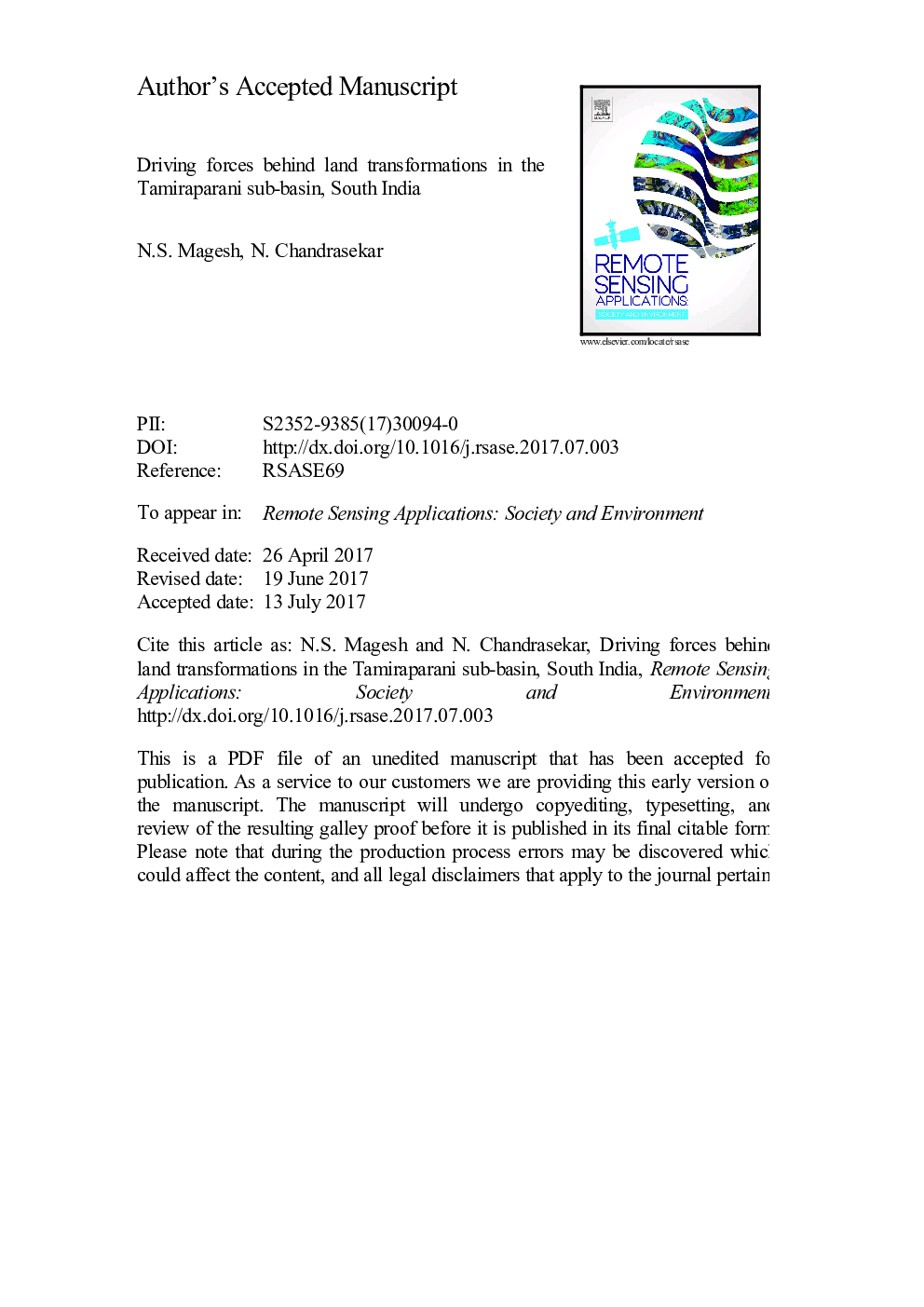| Article ID | Journal | Published Year | Pages | File Type |
|---|---|---|---|---|
| 5754596 | Remote Sensing Applications: Society and Environment | 2017 | 28 Pages |
Abstract
The present study emphasizes the long-term (1992-2012) land alteration and its driving factors in the Tamiraparani sub-basin, south India. The multi-temporal landuse/land cover features were extracted from the Landsat images (TM and ETM+, 30Â m resolution) using a supervised classification technique with maximum likelihood classifier. The extracted features were classified into various landuse/ land cover categories with level I classification scheme of NRSC, India. Six major landuse classes such as forest, settlement, barren land, water bodies, agricultural land and fallow land were recognized. The overall accuracy for the year 1992, 2002, and 2012 shows 85.55%, 82.81% and 83.59% respectively. The overall Kappa coefficients for the datasets are near to 0.8, which indicates acceptable accuracy for landuse/ land cover classification. The results reveals that the spatial extent of forest, settlement and barren land has evolved in the past 20 years but, the water bodies, agricultural land and fallow land has reduced significantly. The reduction in agricultural land in the study area for the past 20 years is due to the combination of natural environment and socio-economic factors such as low rainfall in the plains, increased surface temperature, reduced soil moisture condition, high rate of evapo-transpiration, reduced water storage level in the reservoirs and ponds, and reduced vegetation cover. These factors are linked with climate change, it alters the socio-economic condition of the area, and such situation will affect the overall ecosystem in the Tamiraparani sub-basin in the near future.
Related Topics
Physical Sciences and Engineering
Earth and Planetary Sciences
Computers in Earth Sciences
Authors
N.S. Magesh, N. Chandrasekar,
